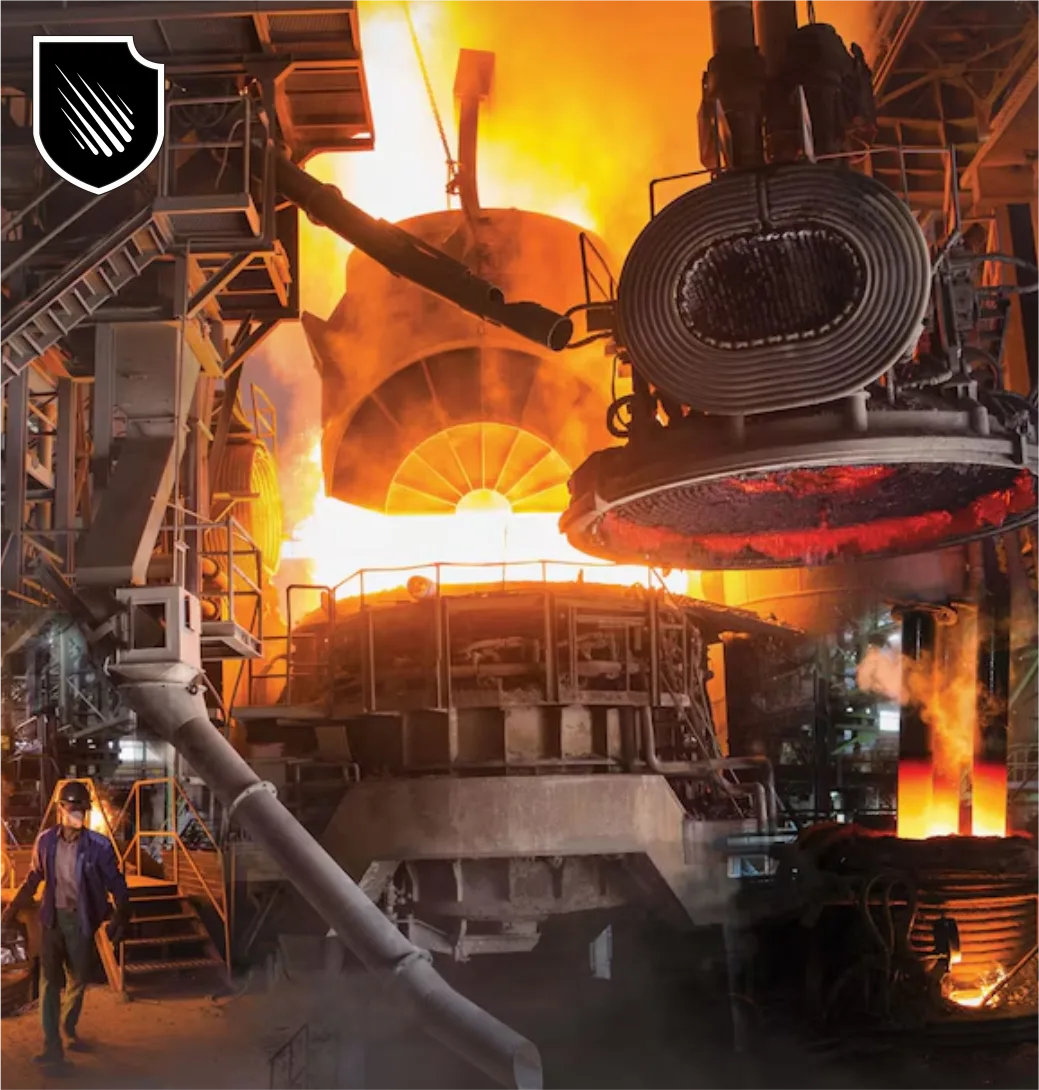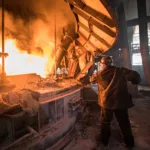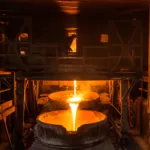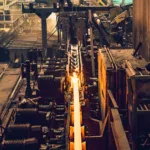Refractory linings in industrial furnaces play a vital role in ensuring operational continuity, efficiency, and safety. Among their key performance characteristics, thermal shock resistance is one of the most critical—especially in high-stress environments such as foundries, induction furnaces, and electric arc furnaces, where rapid temperature fluctuations are common.
In this article, we explain what thermal shock resistance is, why it matters, when it becomes critical, and how to improve it through material selection, design, and process control.
What is Thermal Shock Resistance?
Thermal shock resistance is the ability of a refractory material to withstand sudden temperature changes without cracking, flaking, or structural failure.
When a refractory is exposed to extreme heat and then rapidly cooled, or when cold scrap is charged into a hot furnace, temperature gradients form within the material. These gradients cause differential expansion between internal and external layers, creating internal stresses that can lead to cracking and material breakdown.
When is Thermal Shock a High Risk?
-
Charging cold scrap into a hot furnace lining
-
Starting up with unsintered refractories
-
Water leaks from ladle or furnace cooling systems
-
Rapid reheating after emergency shutdowns
-
Using low-grade or improperly specified refractory materials
-
Inadequate or incorrect sintering cycles
What Happens When Shock Resistance is Low?
-
Surface cracking and spalling of the refractory
-
Metal penetration through damaged furnace walls
-
Unplanned production stoppages and emergency repairs
-
Increased melt times and energy consumption
-
Safety hazards (e.g., metal leaks or steam explosions)
-
Higher maintenance costs and unplanned downtime
Key Factors That Influence Thermal Shock Resistance
1. Thermal Expansion Coefficient
Lower expansion = higher resistance to thermal shock
2. Microstructural Flexibility
Porous structures absorb thermal stress
Strong intergranular bonds delay crack propagation
3. Type of Binder
Cement-bonded refractories are more shock-sensitive
Chemical or resin-bonded materials perform better under stress
4. Material Thickness & Geometry
Thick or uneven shapes trap more stress
Slim and uniform geometries allow better stress distribution
How to Improve Thermal Shock Resistance
-
Choose high-quality, low-expansion refractories
-
Always perform a complete sintering process before use
-
Avoid sudden thermal drops—charge materials gradually
-
Use automated temperature control systems in furnaces
-
Promote formation of a protective slag layer inside vessels
-
Opt for monolithic refractories with high thermal tolerance
Common Real-World Scenarios
-
Induction Furnace: Charging cold rolled scrap (DKP) into an unsintered lining = immediate cracking
-
Electric Arc Furnace: Local oxygen injection near the electrode causing sudden 300–400°C differences
-
Ladle Transfer: Exposing a ladle at 1600°C to cold airflow, inducing rapid surface contraction
Alpha Refractory LLC: Our Engineering Approach
At Alpha Refractory LLC, we offer full support to help clients mitigate thermal shock risks through:
-
Customized refractory formulations with enhanced shock resistance
-
Sintering plans tailored to furnace type and charge program
-
In-field thermal monitoring and performance analysis
-
Leak risk identification and proactive intervention strategies
-
Technical training and on-site supervisory services
Protect your furnace, prevent production loss, and ensure safety—with the right materials and technical support from Alpha Refractory LLC.




